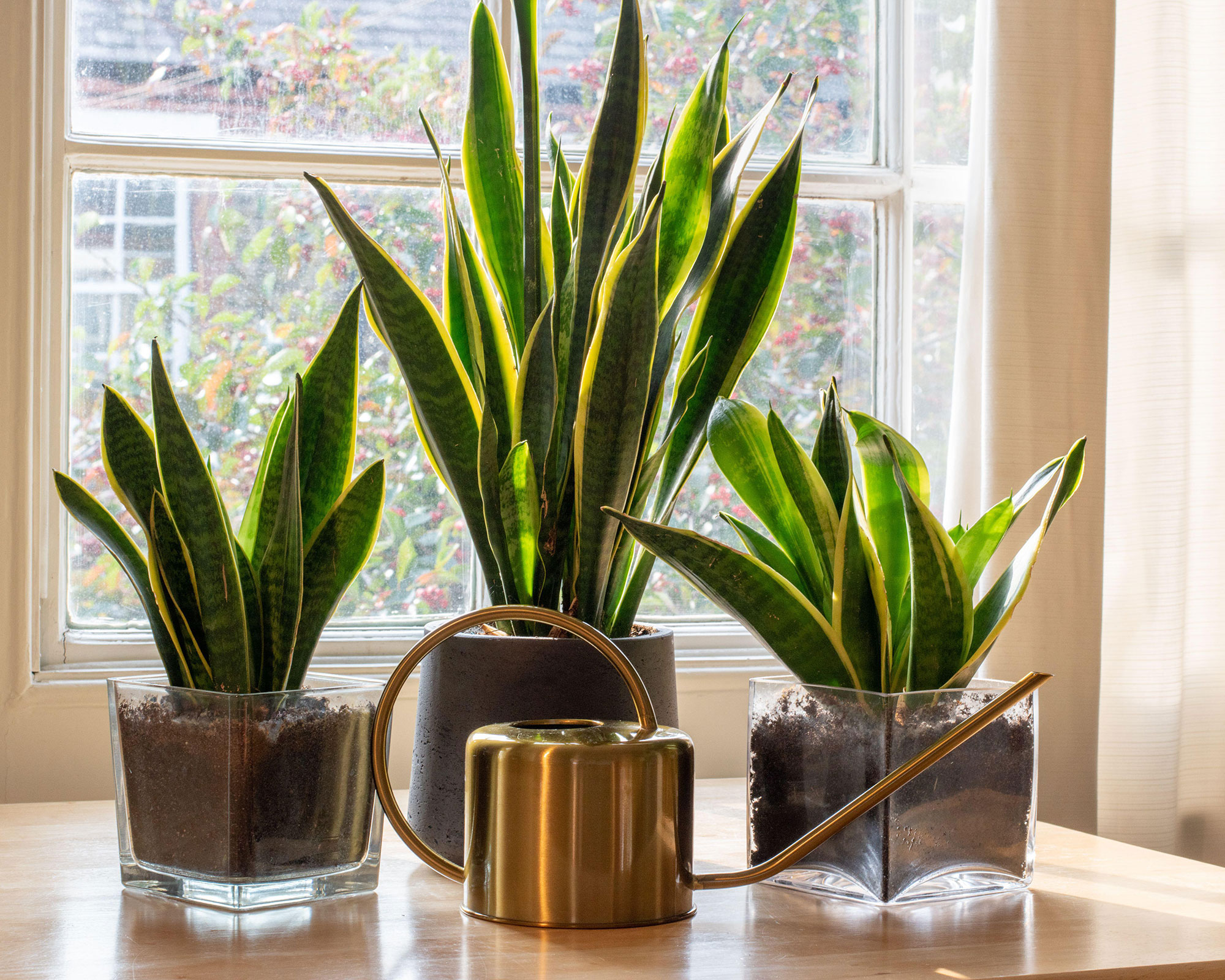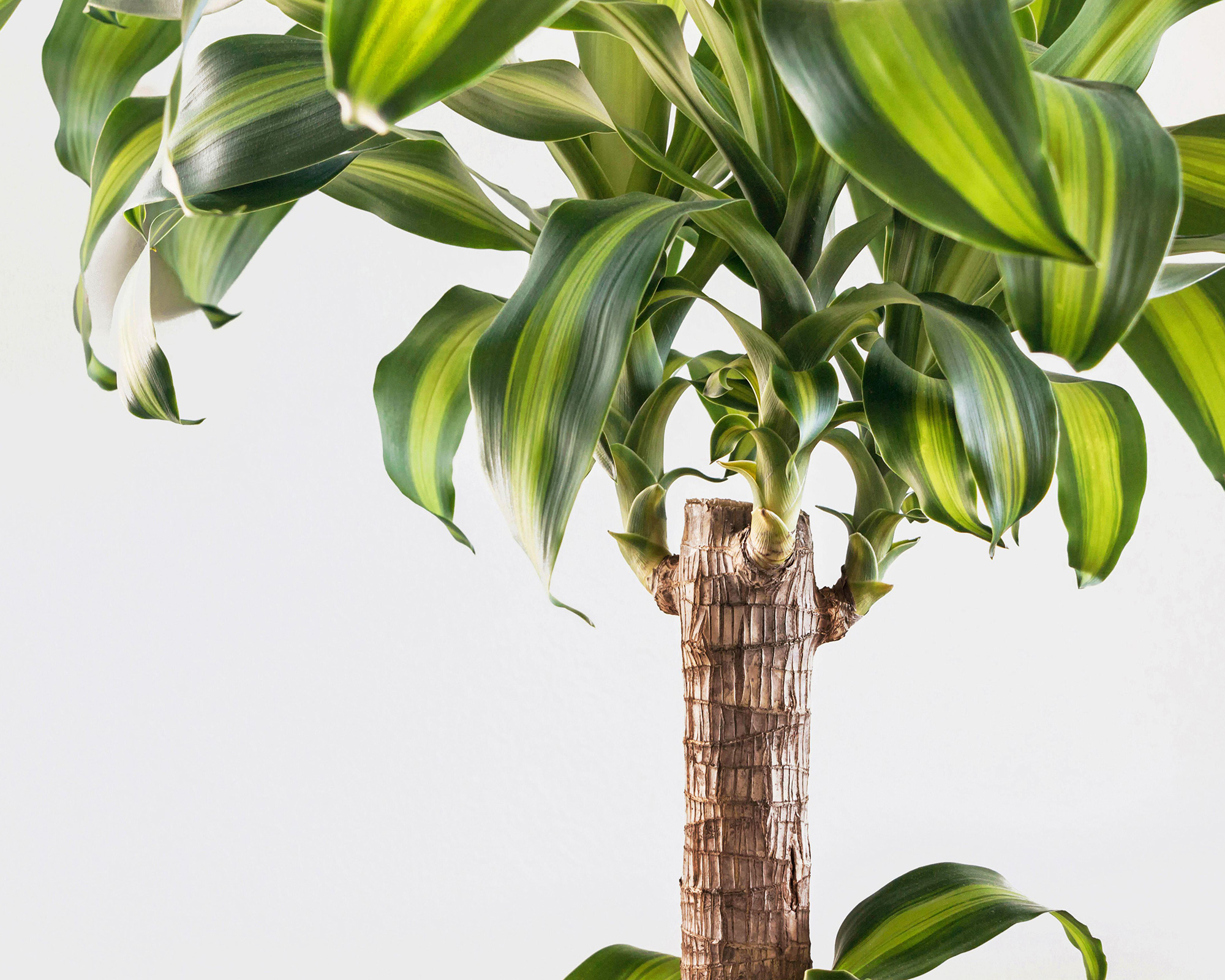Best plants for bedrooms: 11 leafy options for calm sleeping spaces
Surround yourself with the best plants for bedrooms to create a relaxing retreat that could help improve your sleep


The best plants for bedrooms help to create a peaceful sleep sanctuary and will thrive even in spaces which do not have many windows or receive much natural light.
Houseplants have a number of beneficial properties for the bedroom. According to research by NASA, certain plants can absorb toxins which are commonly found in the home, such as formaldehyde and nitrogen oxide.
Some of the best indoor plants can boost humidity too, alleviating the dry air created by central heating, allowing us to breathe easier. In addition, a 2021 survey by Miracle-Gro found that houseplants make 45 per cent of us feel calm, 44 per cent of people happy and 40 per cent feel more positive, all qualities which might well help us to switch off and drift off into a refreshingly deep sleep.
'Calming green plants can help to promote a restful mood which is exactly what you want in your bedroom,' says Kate Turner, gardening guru at Miracle-Gro. 'We often overlook the plants we have in the bedroom, so houseplants with large green leaves are a great option as these will need less light to grow and they are easier to care for.'
Create a sanctuary with the best plants for bedrooms
It's worth bearing in mind that not all houseplants are suitable for sleeping spaces. Certain species do not thrive near radiators, as the heat can scorch them, while others may grow too large and unruly for a smaller room. Ensure you make the right choice by taking your pick from our edit of the best plants for bedrooms and you'll boost sleep hygiene whilst creating a more stylish interior in the process.
1. Peace lily

This plant is efficient at purifying air and it has elegant, pure white flowers which create a sense of calm and tranquility making it a win-win for the bedroom. Pop it in a dimly lit corner, and it will thrive (although it might not flower as frequently in very low light).
Water when the top few centimetres of the compost dry out and give it a weekly houseplant fertilizer feed during the summer months. If the leaves start to shrivel, mist them with water.
The peace lily is also one of the best plants for bathrooms if you're looking to add some greenery to that space in your home too.
2. Pothos (Devil’s Ivy)

With variegated, heart-shaped leaves on a twisty, vine-like stem, this plant is a climber, but it can be trailed from a pot if space is tight, or even trained up the bedroom wall to create a striking feature as part of your indoor garden ideas.
It's one of the best plants for bedrooms that will tolerate low light, and it is a plant for houseplant newbies, as it only needs watering once a week and very little extra care. Simply snip it back with scissors if it grows too vigorously for the size of your space.
3. Rubber Plant

If you use hairspray and cosmetics in your bedroom, this plant makes a wise choice because evidence shows that it helps to neutralise formaldehyde and benzene (which may be contained in some beauty products, such as hairspray).
With large, stiff, glossy, rounded leaves, it’s a stylish plant which can grow 6-10ft tall, so it’s ideal for apartments with high ceilings. It will tolerate lower light levels, but moderate ones suit it best. Keep the leaves dust-free by wiping them regularly.
4. Sansevieria (Snake Plant)

Upright, sword-shaped leaves with a stippled, variegated colour gives rise to the popular name of Snake Plant, because it resembles the reptile’s skin. These are one of the best plants for bedrooms because they absorb carbon dioxide and other toxins from the air, and they emit oxygen at night.
One of the best low maintenance indoor plants, they are easy to care for. The main enemy of this plant is over-watering, so let the soil dry out before giving them a drink.
They will tolerate shade, and can cope with the dry, warm conditions of a centrally heated apartment. As slower-growing, upright plants, these are a top choice for smaller bedrooms, too.
5. Monstera deliciosa (Swiss Cheese Plant)

The huge leaves of this Insta-favourite make it extremely efficient at removing carbon dioxide from the atmosphere and releasing oxygen. Keep the foliage clean and dust-free so it can do its job efficiently.
It dislikes direct sunlight, but equally, you should avoid deep shade. A healthy monstera grows about a foot (30cm) every year and can top 10ft (3m). Some stems might need supporting as it grows.
6. Heart-leaf philodendron

Perfect for popping on a shelf or on top of a bookcase, the so-called Sweetheart plant has heart shaped leaves on long stems which will either climb or trail, depending on where you site your plant.
Another good plant for neutralising toxins, especially formaldehyde, this one will thrive even in low light, and it actively dislikes direct sunshine. It’s a fast-grower in the right conditions.
Keep the soil moist in the growing season, but let it dry out in winter between cans. As a tropical plant, this one prefers lukewarm water rather than cold.
You'll find plenty more of the best tropical plants in our dedicated guide, too.
7. Spider Plant

Almost everyone can recognise a spider plant, and these low maintenance choices are great for placing on a bedroom shelf as they dislike direct sunshine, which can scorch the leaves.
Another effective air purifier, the fountain-like leaves will grow outwards, and produce baby plantlets, which can either be potted on to provide new additions for your indoor plant ideas, or just left as they are.
8. Areca Palm

If you suffer with painful sinuses, it could be worth investing in one of these big plants (also called a Butterfly Palm), because they are excellent at improving air humidity.
A statement plant, which can grow as tall as 7ft (2.1m), it has a tropical look, with strappy, arching leaves. Grow it in bright light but out of direct sunshine.
It's important to learn how to repot a plant if you're growing this variety as it will need to be repotted about every three years to keep it healthy. Mist the leaves regularly and allow the soil to dry out slightly before watering.
9. Aloe Vera

The sap from this succulent is used in beauty products as a soothing, healing agent but it’s also useful for reducing formaldehyde in the atmosphere (a toxin which is present in some household cleaning products). It has fleshy leaves with serrated edges, and a graphic shape.
Unlike many houseplants, it is happy in direct sun, and will tolerate hot temperatures. Water sparingly, only when the compost has dried out (about every three weeks).
There's plenty more advice on how to care for succulents in our guide, too.
10. Dracaena fragrans (Dragon Tree)

In the NASA clean air study, which examined the ability of plants to remove toxins from the atmosphere, the Dragon Tree was discovered to absorb household pollutants such as formaldehyde, benzene and carbon dioxide. It will also help to humidify the air making it one of the best plants for bedrooms.
In addition, its long, straight leaves with a variegated stripe, look super stylish. Put it on a shelf or table away from direct sunshine and water when the top couple of inches of compost are dry during the spring and summer. In winter, reduce the amount of water.
There's more tips on caring for indoor plants in winter in our guide.
11. Lucky Bamboo

If you're a fan of Zen garden ideas for your outside space, then this little plant could be the perfect choice for your bedroom.
Unlike the other plants on our list, this one does not need to be grown in compost, it can exist happily in at least 2in (5cm) of water, so long as it is not tap water (distilled, filtered or rainwater are best). This should be changed every couple of weeks.
The plant needs a bright-ish spot, but no direct sunlight. Add a drop of liquid feed to the water every few months. In feng shui, it’s said to bring good fortune - and we won’t say no to that!
What are the top plants for bedrooms?
Kate Turner, gardening guru at Miracle-Gro chooses her top three favorite houseplants for the bedroom:
- Snake Plant These plants are super easy to look after and remove both toxins and carbon dioxide from the air, while also breathing oxygen at night.
- Madagascar Jasmine A romantic, glossy plant with dark green foliage and sweetly scented blooms/
- Dracaena Fragrans These plants remove toxins from the air and are very easy to care for. They prefer filtered light, so are perfect for bedrooms with lower light levels.
Can houseplants improve your sleep?
If you have trouble sleeping, introducing some of the best plants for bedrooms to your sleeping space may even help with insomnia. 'Choosing plants that produce oxygen, such as the Peace Lily, Snake Plant and Spider Plant, can help promote a more peaceful night’s sleep,' explains Kate Turner. 'Even scented plants, like the Madagascar Jasmine, are known to aid slumber, with sweetly scented blooms which can help you feel calm and relaxed.'
Introducing greenery to the bedroom may also help to counter the effects of modern technology, which can be a barrier to sleep. Some research suggests that the blue light from computers, smartphones and TVs suppresses the sleep-inducing hormone melatonin.

Can houseplants improve the air quality in bedrooms?
Houseplants can have a positive impact on air quality. To maximise the effect, group plants together, as recommends Kate Turner. Her recommended plants for improving air quality are Dendrobium Orchids, Dumb Cane (Diffenbachia) and Dracaena Fragrans.
Which houseplants grow best in a dark bedroom?
'If your bedroom doesn’t get a lot of light, then opt for plants which have larger and darker leaves,' says Kate Turner. 'The larger leaves mean that they have more chlorophyll and need less light – think jungle floor plants like the rubber plant (Ficus elastica), which grow in light which is filtered down by larger leafed plants.'
That said, it is important to maximize all available light. 'Through autumn and winter, open curtains and blinds fully during the day to create light during these darker months,' advises Kate. 'It is also important to feed plants in spring and summer to keep them healthy and happy. I recommend Miracle-Gro Organic Pump & Feed All Purpose (available from Amazon) as it’s so quick and easy to use.'
If you're looking for plants that grow well in low light levels outdoors, our guide to the best shade loving plants has plenty of top suggestions.


An experienced freelance journalist, editor and columnist writing for national magazines and websites, Fiona now specialises in gardens. She enjoys finding and writing about all kinds, from the tiniest town plots to impressively designed ones in grand country houses.
